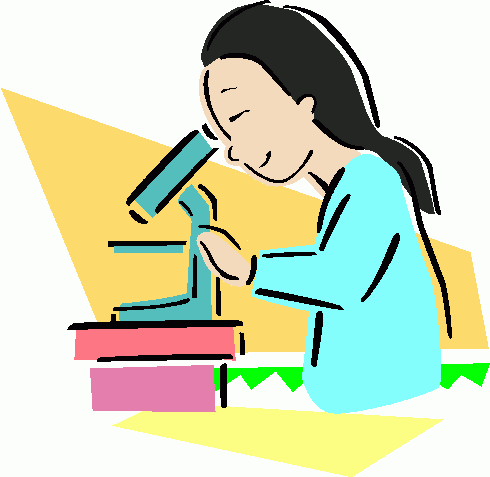Laboratory Safety
| hazard_symbols.pptx | |
| File Size: | 3102 kb |
| File Type: | pptx |
Cells
This unit looks at the structure and function of cells followed by their organisation within organisms.
Week One
Expeiences and Outcomes
Using a microscope, I have developed my understanding of the structure and variety of cells and their functions. SCN 3-13a
|
Instruction on using the microscope.
Numeracy: determining the magnification through multiplying the magnification of the eyepiece and the objective lenses. Determining the field of view by placing a ruler (mm) on the stage. Preparing microscope slides – Onion epidermis. Numeracy: estimating the length of onion cells by dividing the field of view by the number of cells across the diameter of the field of view. Using the Bioviewers to compare cell types. Drawing cells: General science skill of line drawings and neat labelling. Differentiation: Less able can label, more able can annotate. |
| ghs_s1_cells.pptx | |
| File Size: | 283 kb |
| File Type: | pptx |
CheckList
Week Two
Experiences and Outcomes
I have explored the structure and function of organs and organ systems and can relate this to the basic biological processes required to sustain life. SCN 3-12a
Activities
|
Characteristics of living things (MRS GREN or MR GRIEF)
In small groups, students can suggest which characteristic each letter represents. Linking the organ systems to the characteristics above. Grouping organs into organ systems. Cells, tissues, organs, organ system hierarchy. Grouping words (sperm, muscle, skin, cardiovascular etc) into cells, tissues, organs, organ system. Group flip chart labelled diagrams of the human body. Flower dissection/anther squash. |
| ghs_s1_organs.pptx | |
| File Size: | 2052 kb |
| File Type: | pptx |
Jigsaw puzzle of the human body organs. Try to beat Mr Mann's time of 1:41.
How many organs can you identify? Do you know their jobs?
How many organs can you identify? Do you know their jobs?
S1 Cells Tissues Organs
This interactive crossword puzzle requires JavaScript and a reasonably recent web browser, such as Internet Explorer 5.5
or later, Netscape 7, Mozilla, Firefox, or Safari. If you have disabled web page scripting, please re-enable it and refresh
the page. If this web page is saved to your computer, you may need to click the yellow Information Bar at the top of
the page to allow the puzzle to load.
|
EclipseCrossword © 2000-2007
Welcome!Click a word in the puzzle to get started. Congratulations!You have completed this crossword puzzle. If you would like to be able to create interactive crosswords like this yourself, get EclipseCrossword from Green Eclipse—it's free! |
| s1_cells_tissues_organs_wordsearch_edited-1.pdf | |
| File Size: | 707 kb |
| File Type: | |
Week Three
Experiences and Outcomes
By researching, I can describe the position and function of the skeleton and major organs of the human body and discuss what I need to do to keep them healthy. SCN 1-12a
Activities
|
Types of joints – ball & socket, hinge, pivot and fused.
Describe the movements that each allow. Relate to types of levers. Muscle pairs – antagonistic muscle pairs. The model arm – Investigating the force needed to raise a load of a 1N load for a short 50cm arm and a long 100cm arm. With the force applied at the same distance from the pivot, the long arm will require a greater force. This requires model arms to be made up in advance with a simple hinge joint. |
Fun Stuff
Complete the jigsaw to find the names of some of the bones of the skeleton.
Checklist
Experiences and Outcomes
I have contributed to investigations into the different types of microorganisms and can explain how their growth can be controlled. SCN 3-13b
Activities
|
The role of micro-organisms in the food industry.
Cheese Yogurt Bread Wine & Beer Possible practical: Comparing the respiration of yeast in the fridge and room temperature using balloons on the test tubes as an indication of the amount of CO2 produced. An alternative is the rising of dough in measuring cylinders but this requires ovens set at different temperatures and it is difficult to regulate the temperature of the school ovens. http://www.rsc.org/learn-chemistry/resource/res00001748/microbes-and-bread-making-using-yeast |
Checklist
Week Four
Experiences and Outcomes
I have explored the structure and function of sensory organs to develop my understanding of body actions in response to outside conditions. SCN 2-12b
Activities
|
Stimulus, receptors and sense organs. Match with lines.
The structure of the eye – limit to cornea, lens, retina and optic nerve. Find the blind spot. Benefit of binocular vision by catching a bounced ping pong ball – monocular/binocular Investigating reaction times using a metre ruler graduated in seconds. Use sight/sound/touch – See Understanding science 2 Teacher’s Resource Book page 72 |
How to find the blind spot:
Checklist
Week Five and Six
Experiences and Outcomes
By investigating the lifecycles of plants and animals, I can recognise the different stages of their development. SCN 2-14a
I understand the processes of fertilisation and embryonic development and can discuss possible risks to the embryo. SCN 3-14a
I understand the processes of fertilisation and embryonic development and can discuss possible risks to the embryo. SCN 3-14a
Activities
|
General life cycle of maturity- courtship & mating – fertilisation – embryo growth – birth (or hatching) – growth – maturity
Apply to fish, amphibians and birds – See Understanding Science 1 Teacher’s Resource Book page 99. Male and female reproductive systems: Male (testes/penis/sperm duct/seminal vesicles and protate) Female (vagina/uterus/oviduct/ovaries) Brief outline of copulation, fertilisation and implantation. Student need to be able to indicate where fertilisation and implantation occur on a diagram of the female reproductive system) Video – The Miracle of Life. There are other options but this is the least likely to cause offence. The foetus within the uterus and the role of the placenta. Limit to:
The production of advisory posters for pregnant women. |




















